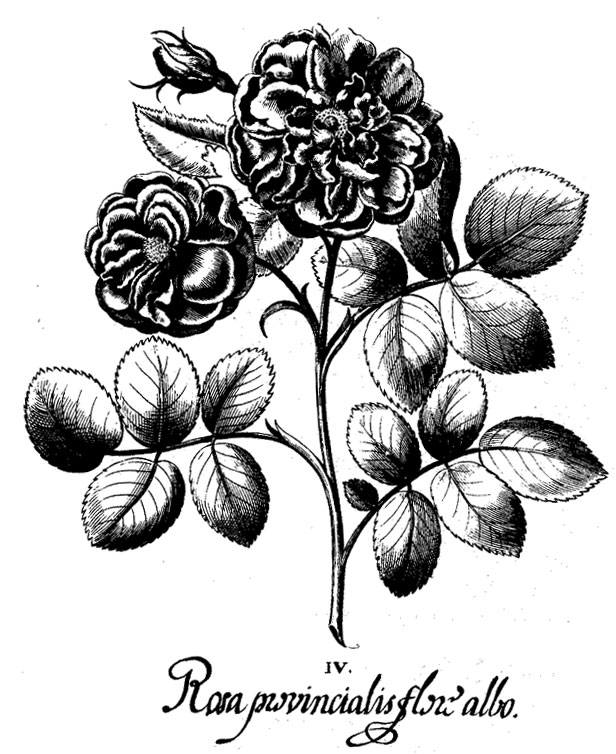All plants have historically been known to have culinary or health benefits that for the most part are not obvious to the people of today. Most people in our modern times through their education, urbanized lifestyle and socialization have been desensitized to Nature and have lost the sensitivity of their senses and their ability to recognize the natural use of things. Having lost a principal part of what it means to be human, many exist in this artificial state but neither live nor realize the possibilities of nobility that lay dormant within them.
 Everyone knows what roses are but, as beautiful as they are are, few go beyond their worth as a symbolic gesture for an anniversary or Valentine’s Day gift. Roses have been the symbol of love between sweethearts for thousands of years and none more so than the red rose. Bunches of roses were found in the tomb of Pharaoh Tutankhamun; laid there by his wife.
Everyone knows what roses are but, as beautiful as they are are, few go beyond their worth as a symbolic gesture for an anniversary or Valentine’s Day gift. Roses have been the symbol of love between sweethearts for thousands of years and none more so than the red rose. Bunches of roses were found in the tomb of Pharaoh Tutankhamun; laid there by his wife.
A Point Of Interest: If a women is preparing this mixture she should be mindful of her menstrual cycle. In years past this was part of collective experience established without prejudice or based on superstition, misogyny or witchcraft. When there was no refrigeration, preserving and curing food was a matter of life and death. Women knew that when menstruating it was best not to be preparing food. In normal menstruation the female body is expelling a form of “blood waste” from her body in the same way as the bowels expel normal excrement. And, although it is rarely recognized as such, this general concept has been recognized as having an effect on the entire female body for a very long time. Hormones and the uterus are relevant but incidental, representing only one facet of the process. When a woman is pregnant – all of her is, not just her uterus. Similarly, when she is menstruating, her whole body is involved because up until that point her whole body had been preparing itself to incubate life in support of the uterus. Therefore the uterine menstrum mainly represents a uterine discharge as the rest of the body is expelling through the blood other “spent substances” intended to support pregnancy to where they can be expelled. (liver, kidney, skin, lymph) The presence of these substances can be detected on some women’s breath or perspiration as a sometimes “metallic” smell, on the face as an cyclical eruption of acne and most importantly on the palms of the hands. Naturally, it only makes sense that these secondary “excrements” not find their way onto food through touch. If food is being handled at that time, the food will stand a good chance of spoiling. At present when almost all foods are chemically stabilized or refrigerated these sort of considerations are considered irrelevant. This does not make them insignificant. In order to ensure that these preparations not spoil, both men and women can use a small amount of honey as an antibacterial on their hands while pressing out the paled rose petals.
Few will not recognized its beauty and its wonderfully transcendent, gentle yet penetrating fragrance. It’s appearance and fragrance cannot be described in mere words. They have to be experienced to be fully appreciated.
The Rose is a northern plant capable of withstanding the cold of winter to then come alive with irrepressible vigor in spring. Like most northern flowers, its colors may not be as vibrant as those of the more southern climates but, what it may lack in vibrancy it makes up for in fragrance, depth of velvety color and shear beauty.
When we are talking about the usefulness of roses beyond their romantic symbolism, it is the natural non-hybridized or wild rose that yield the greatest benefits. There are over 70 species of wild roses in Europe, some having been brought back to Europe from the Middle East. North America also has its own native wild roses. And, although many have hybridized them to enhance one or another feature of this “Queen of Flowers,” often the plant looses some of it’s essential properties in the process; the most noteworthy being it’s beautiful scent. As beautiful as it’s bloom may have been cultivated, without it’s scent, it can hardly be called a rose any longer. Sacrificing that essential part of the rose means that it’s medicinal qualities have been taken from it.
Given that the principle qualities of the rose are it’s red color, velvety texture, penetrating fragrance and general cooling effect it is not surprising that it was used where heat, dryness or stagnation were manifesting anywhere on or in the body.
It was noticed thousands of years ago that roses soothe and are mildly anti-inflammatory to the skin. So roses, likely long before Roman times were often dried and powdered to be used as talcum powder used to be used; especially on the delicate skins of the body. When rosewater is sprayed onto the skin tends to soften and moisturize at the same time and the effect is felt almost immediately. Given the obvious feeding of the skin through it’s own moisture and improved circulation, it was used on acne and general “hot” skin conditions, cuts or bruises. Why even use the often “industrial strength” chemically based products currently being marketed if you have a healthy rose bush growing somewhere in the neighborhood or in the backyard? You could hardly do any worse.
Inhaling the fragrance relieved headaches, (most artificial scents, being sulfur based tend to produce headaches and other problems) depression and improved eyesight, suggesting that roses affect the digestion, (stomach and liver) the nerves (and their extensions) and general circulation.
Roses should be picked from healthy plants that have not been chemically sprayed. They should not be picked when they are wet. When picked while still budding and not fully opened in the morning you capture more of their essential oils. Roses need to be dried quickly in open air but not in direct sunshine and then stored in a tin box or in a tightly sealed jar and kept away from sunlight. Their fragrance should concentrate and they should be prepared and used within three or four months after having been picked.
Most people do not have the facility or equipment to distill the essential oil of roses and to buy it is an expensive proposition. It used to sell for about $11,000 a gallon 30 years ago. Be prepared for a shock should you go looking for it.
That said there are various ways of collecting the essential oil of roses into various mediums.
- Pick the petals of roses, put them into olive oil and place this mixture into a clean clear glass jar on a window sill but not in direct sunlight. Pick the roses daily and add them generously to the olive oil. The more you add the more essential oil you will transfer over to the olive oil base. You will notice that after a day or so that the color of the petals will fade from their normal color to a very pale color. That indicates the degree of transfer. These pale petals need to be strained out thoroughly before fresh petals are added.
Keep doing this until the fragrance of the roses has overtaken the aroma of the olive oil and then just keep going a little further until all you can smell is the rose fragrance. Should you have an abundance or roses, keeping adding them and pressing them out for as long as you have petals to harvest. It will only improve the quality of this precious oil. It should then be stored in glass that has been darkened in a cool dry place. Tabernaemontanus
You now have one the finest skin moisturizers that can be made by human hands.
- Using the same basic process just mentioned you can also make an excellent Red Wine Rose Vinegar. But, although you could, this is not a vinegar that you would want to waste on your salad. If is a vinegar that is so useful and helpful for the skin that you will guard it and use it sparingly because of the effect it has on the skin.

Start by taking about a gallon of quality red wine vinegar. Be sure that the gallon is not completely full and then freeze it. This is called a cold distillation. After a few days you can either bring it in from the cold or out of the freezer and you will notice that all the liquid will not have frozen. The outer liquid will have frozen but there will be an inner liquid that is still in liquid form and still has it’s color. This is called the “spirit of vinegar,” which you will pour off and into which you will start placing your fragrant rose petals in the same manner as explained above. Keep doing this until all you smell is the fragrance of the roses and you can continue for as long as you have rose petals. One precautionary note to heed is that if you will lose some volume in the process of doing this. So be sure to start with enough Spirit of Vinegar.
You now have an excellent skin softener, moisturizer, antiseptic for the skin. The time that it takes to prepare these sort of remedies will vary. The only way to learn the process is not from a recipe alone. Experience is the only way of learning how it’s done. Tabernaemontanus
- If that is too much trouble but, believe me your trouble will be rewarded, you can also take about a gallon of good red wine vinegar, add about 10 handfuls of rose petals to it and leave it either in a sunny window for about 2 to 3 weeks and then strain it. You will have a weaker version of the previously mentioned Rose Wine Vinegar that you can gargle with, use on your skin or dress your salads with. Maurice Messegue
- An infusion or tea can be made by simply boiling about a quart of water or red wine and then adding a handful of dried rose petals to it. It is best before meals. Maurice Messegue
- To someone in North America this may sound a little funny but, rest assured it will be a great ointment that will not spoil. – Take about 9 ounces of lard, yes I said lard. Add to that 9 ounces of fragrant rose petals. Mix them together well for about a week. Then heat them slowly on a very low flame. Then squeeze through a cloth and pour into a glass jar that has a tightly closing lid. When it hardens you will have an ointment for the skin. Surprisingly, the lard will be one of the finest, silkiest, smoothest, most penetrating ointments you will have ever tried and it preserves itself. It is best not to dip your fingers directly into it as bacteria will enter the ointment that could make it turn. Just put some onto your fingers with a cotton swab to preserve the ointment as it was made. Maurice Messegue



